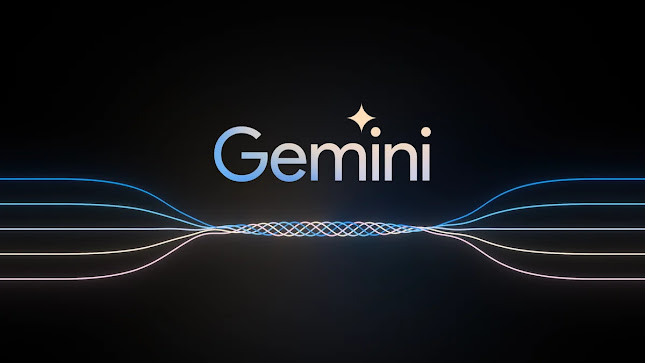Enhancing Knowledge Retrieval with Context-Augmented Agents
Hello everyone! Today, we're diving into the fascinating world of context-augmented knowledge assistance. You've probably heard about retrieval-augmented generation (RAG) and its impressive capabilities. However, RAG by itself is not enough for sophisticated knowledge retrieval. In this blog post, we'll discuss the role of agents, their key components, and how to build them using a framework called Llama Index. We’ll also explore an example of reading a PDF using Llama Parse and leveraging an LLM for enhanced querying.
What is Llama Index?
Llama Index is a framework designed for building large language model (LLM) enabled applications over your data. It supports both Python and TypeScript and connects to your data wherever it resides. Llama Index helps you parse, index, store, and query your data, enabling you to build sophisticated software for advanced querying and retrieval.
The Basics of Retrieval-Augmented Generation (RAG)
RAG involves several key steps:
- Data Ingestion: Collect and parse your data into manageable chunks.
- Embedding: Convert these chunks into vector embeddings.
- Storage: Store these embeddings in a vector store.
- Querying: Perform semantic search on the vector store using a query, retrieve the most relevant chunks, and pass them to an LLM.
- Response Generation: The LLM generates a response based on the provided chunks and query.
While RAG is powerful, it has limitations, especially for complex queries that require summarization, comparison, or implicit understanding.
The Limitations of Naive RAG
Naive RAG works well for straightforward questions over small datasets. However, it struggles with:
- Summarization: It cannot generate a comprehensive summary of a document if the summary isn't explicitly present.
- Comparison: It has difficulty comparing multiple entities effectively.
- Implicit Understanding: It fails to answer questions that require implicit knowledge or multi-step reasoning.
- Multi-Part Questions: It gets confused with complex queries that require breaking down into multiple parts.
Enhancing RAG with Agents
To overcome these limitations, we introduce context-augmented agents. These agents bring additional capabilities to the table, such as:
- Routing: Selecting the best tool or method to answer a query.
- Memory: Retaining context from previous interactions.
- Query Planning: Breaking down complex queries into simpler ones and aggregating responses.
- Tool Use: Interfacing with external tools and APIs for additional information.
- Reflection and Error Correction: Evaluating and improving responses.
Building Agents with Llama Index
1. Routing
Routing uses LLMs to select the best tool for answering a query. For instance, if a summarization tool is available, the agent can choose it over a simple search tool.
from llama_index import RouterQueryEngine
# Create tools
search_engine = SimpleSearchEngine()
summarization_tool = DocumentSummarizer()
# Create a router
router = RouterQueryEngine(tools=[search_engine, summarization_tool])
# Execute a query
response = router.query("Summarize the document")2. Memory
Memory involves retaining previous interactions to provide context for future queries. This is essential for multi-turn conversations.
from llama_index import ChatEngine
# Initialize chat engine
chat_engine = ChatEngine()
# Chat with memory
response = chat_engine.chat("What is the document about?")3. Query Planning
Query planning breaks down complex queries into simpler parts and aggregates the results.
from llama_index import SubQuestionQueryEngine
# Create sub-question engines
engine1 = SimpleSearchEngine()
engine2 = SimpleSearchEngine()
# Initialize sub-question engine
sub_query_engine = SubQuestionQueryEngine(engines=[engine1, engine2])
# Execute a complex query
response = sub_query_engine.query("Compare the arguments in articles A and B")4. Tool Use
Agents can use external tools and APIs to gather additional information.
from llama_index import Tool
# Define a custom tool
def custom_tool(query):
# Custom logic to retrieve data
return "Data from custom tool"
tool = Tool(name="CustomTool", function=custom_tool)
# Use the tool in a query
response = tool.query("Use custom tool to fetch data")Example: Reading PDF Using Llama Parse and Leveraging LLM from OpenAI
Let's walk through an example of reading a PDF document using Llama Parse and leveraging an LLM to generate responses.
Step 1: Reading the PDF
First, we need to read and parse the PDF document.
from PyPDF2 import PdfReader
def read_pdf(file_path):
reader = PdfReader(file_path)
text = ""
for page in reader.pages:
text += page.extract_text()
return text
file_path = "example.pdf"
pdf_text = read_pdf(file_path)Step 2: Chunking the Text
Next, we'll split the text into manageable chunks.
from llama_index import RecursiveCharacterTextSplitter
def get_text_chunks(text):
splitter = RecursiveCharacterTextSplitter(chunk_size=1000, chunk_overlap=100)
chunks = splitter.split_text(text)
return chunks
text_chunks = get_text_chunks(pdf_text)Step 3: Embedding the Chunks
We'll convert these chunks into vector embeddings using an LLM.
from llama_index import LLMEmbeddings
embeddings = LLMEmbeddings(model="openai-embedding-model")
vector_store = embeddings.create_vector_store(text_chunks)Step 4: Querying and Generating Responses
Finally, we'll query the vector store and generate responses using an LLM.
from llama_index import QueryEngine
query_engine = QueryEngine(vector_store=vector_store)
def query_pdf(query):
response = query_engine.query(query)
return response
query = "What is the main topic of the document?"
response = query_pdf(query)
print(response)Conclusion
By integrating advanced strategies, you can build sophisticated agents that enhance the capabilities of RAG. These agents can handle complex queries, perform multi-step reasoning, and provide more accurate and comprehensive responses.
To sum up, we've discussed the limitations of naive RAG, introduced context-augmented agents, and demonstrated how to build them using Llama Index. With these tools and techniques, you can create powerful knowledge retrieval systems that go beyond simple semantic search.
Thank you for your time and attention. Happy coding!




Comments
Post a Comment